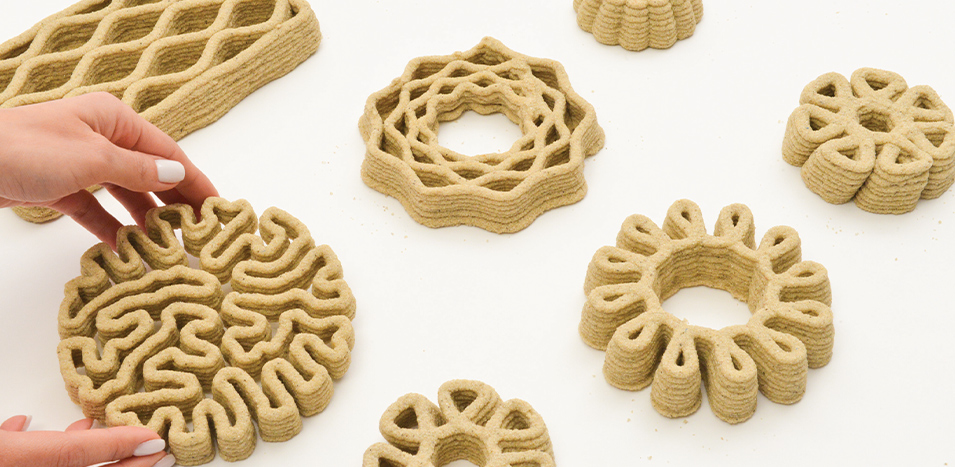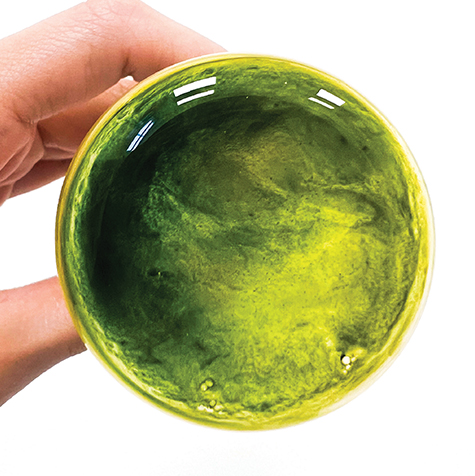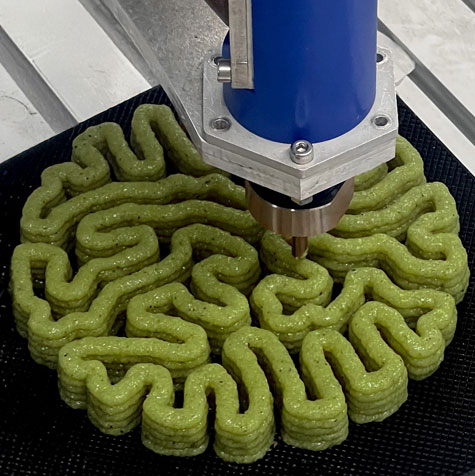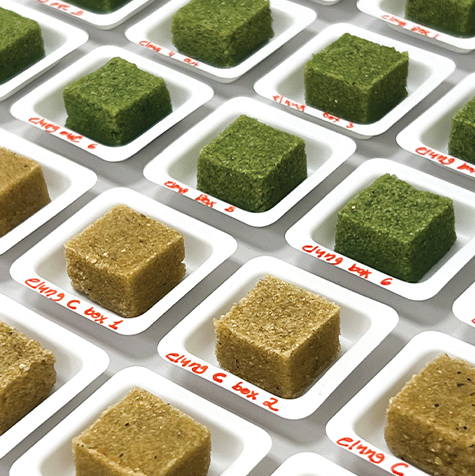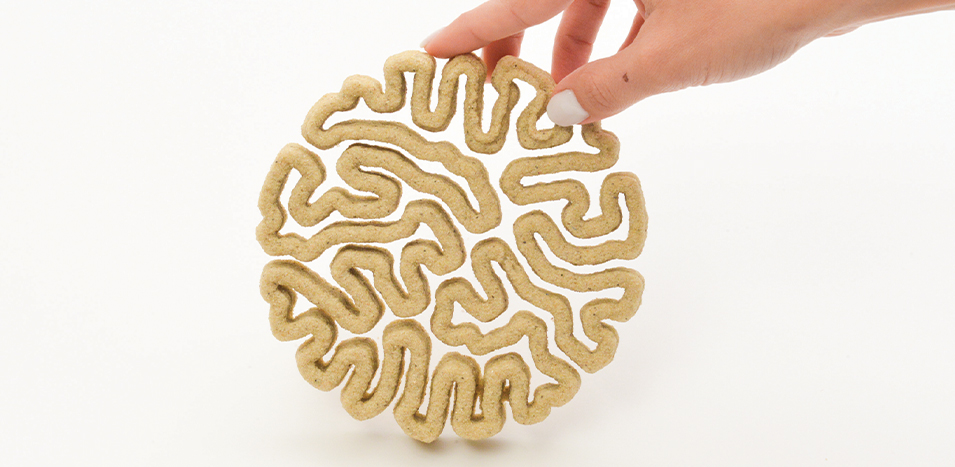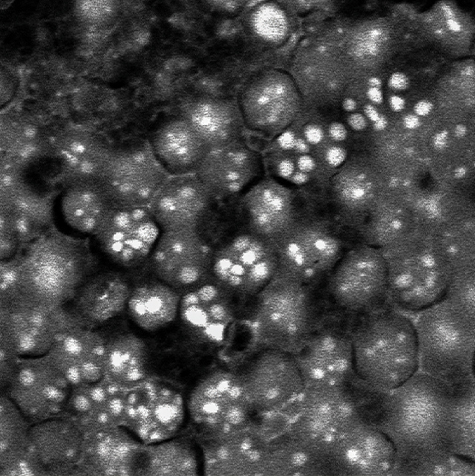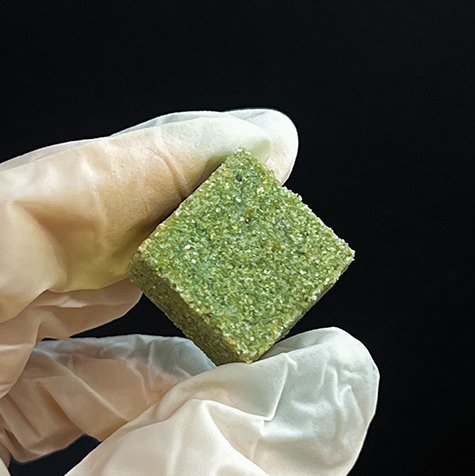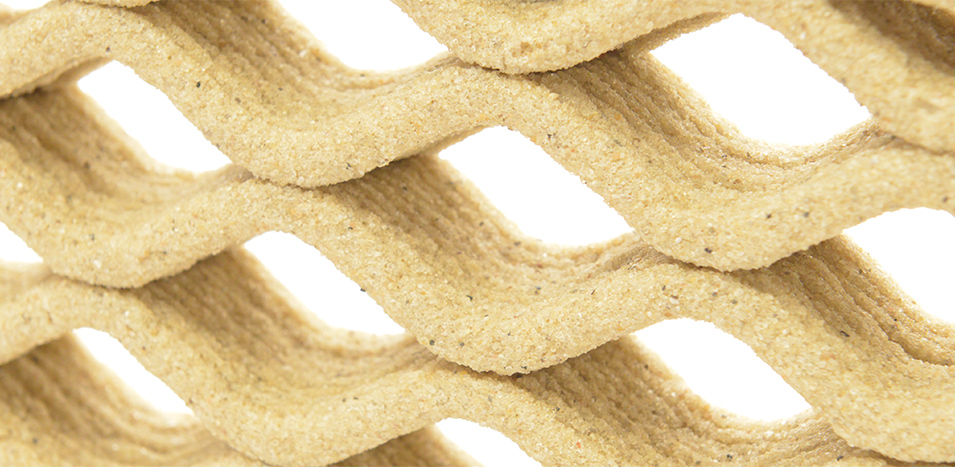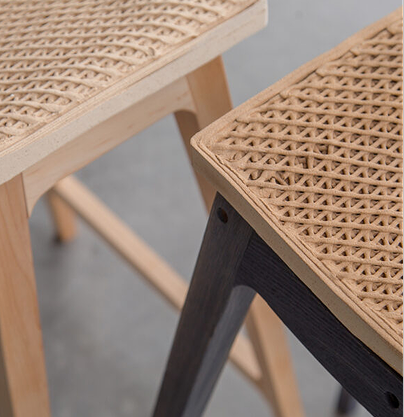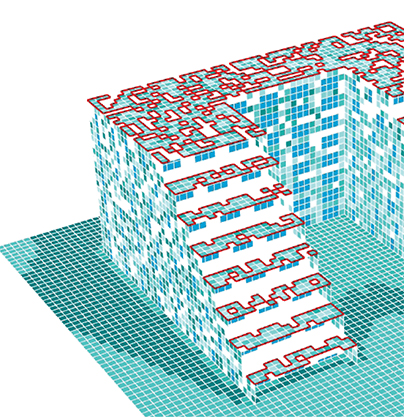Conventional mass manufacturing of concrete products contributes to 8% of global industrial CO₂ emissions and generate 15-28% of solid waste. We address these challenges by leveraging cyanobacteria’s calcium carbonate (CaCO₃) biocementation and CO₂ fixation capabilities in 3D printing biomixtures.
At the material level, we replace greenhouse gas-emitting processes by harnessing the CO₂ fixation capacity of cyanobacteria, where each ton of accumulated dry cyanobacterial biomass can fix 1.8 tons of CO₂. Additionally, biocementation is employed for component solidification, enhancing strength.
Our manufacturing approach shifts from traditional casting to additive manufacturing (Robotic 3D printing), which reduces carbon footprint, waste, and energy consumption. Furthermore, using computer-aided design (CAD) tools, we have developed design guidelines that optimize cyanobacterial biocementation and CO₂ fixation by linking geometric properties to biological needs. Through this interdisciplinary research, we merge biology and architecture to enable the seamless design-to-fabrication of Cyanobacteria powered 3D printing of carbon-efficient building components.
